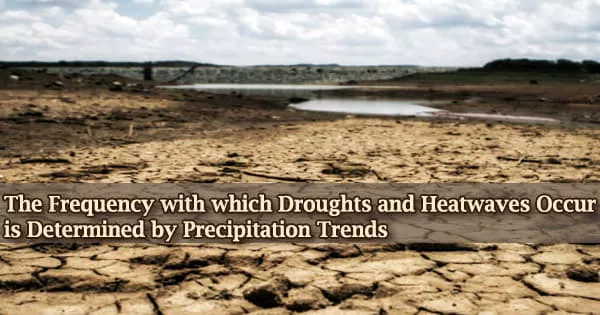Climate change will modify the average amount of precipitation on land, increasing the frequency of droughts and heat waves.
However, it has remained unknown until now under what conditions both extreme events, termed as ‘compound hot-dry-events,’ will occur simultaneously.
These summers were identified by the UFZ researchers as those in which the average temperature was greater than in 90% of the summers between 1950 and 1980, while precipitation was lower than in 90% of those years.
“In the past, periods of drought and heat waves were often considered separately; there is, however, a strong correlation between the two events, which can be seen in the extremes experienced in 2003 and 2018 in Europe. The negative consequences of these compound extremes are often greater than with one single extreme,” says UFZ climate researcher Dr. Jakob Zscheischler, last author of the study.
However, until today, it was unknown what the future simultaneous occurrence of these extremes would depend on because the uncertainties in the occurrences calculated by commonly used climate model simulations were too big to provide reliable predictions.
To lower and better comprehend these uncertainties, the researchers employed a unique model ensemble consisting of seven climate models. To account for natural climate fluctuation, each model simulation was repeated up to 100 times.
They looked at the data from 1950 to 1980 and compared it to predictions for a future temperature that is two degrees warmer than pre-industrial levels.
Climate change may shift the distribution of precipitation in certain regions. The pattern of precipitation depends on atmospheric circulation, which determines regional weather dynamics through numerous interactions over large parts of the globe.
Emanuele Bevacqua
“The advantage of these multiple simulations is that we have a much larger volume of data than with conventional model ensembles, enabling us to better estimate compound extremes,” explains Dr. Emanuele Bevacqua, first author and climate researcher at the UFZ.
The researchers were able to confirm a previous hypothesis that the average frequency of compound hot-dry events will increase with global warming: while the frequency was 3 percent between 1950 and 1980, which corresponded to an occurrence every 33 years statistically, this figure will be around 12 percent in a climate that is two degrees warmer. In comparison to the historical time studied, this would be a fourfold increase.
The climate scientists were also able to deduce from the models that the frequency of compound hot-dry events will be determined by precipitation trends rather than temperature developments in the future.
The reason for this is because, even with a two-degree increase in global temperature, local temperature increases will be so large that, in the future, any drought anywhere in the world will be followed by a heat wave, regardless of the precise number of degrees that global temperature rises.
The error in the prediction of compound hot-dry event frequencies is just 1.5 percent due to the uncertainty in the warming. This eliminates temperature as a significant source of uncertainty. However, the researchers predicted a 48 percent uncertainty for precipitation.
“This demonstrates that local precipitation trends determine whether periods of drought and heat waves will occur simultaneously,” explains Emanuele Bevacqua.
For Central Europe, this means that concurrent droughts and heat waves will occur on average every ten years in the case of a “wet storyline” with increasing precipitation, and at least every four years in the case of a “dry storyline” with declining precipitation.
For Central North America, these events would be expected every nine years (‘wet storyline’) and six years (‘dry storyline’).
These regional precipitation trend stories can be used to inform adaptation decisions, such as evaluating best and worst case scenarios. Even if we know that precipitation trends are important in determining the occurrence of concurrent droughts and heat waves, it is still difficult to anticipate them with any certainty:
“Climate change may shift the distribution of precipitation in certain regions. The pattern of precipitation depends on atmospheric circulation, which determines regional weather dynamics through numerous interactions over large parts of the globe,” says Emanuele Bevacqua.
It’s impossible to minimize these uncertainties even further because many of these processes’ dynamics are yet unknown.
This discovery that a trend in one variable predicts the future occurrence of two simultaneous extreme occurrences with a two-degree global temperature increase can be applied to other compound extremes. It may be used to model the interplay of tropical storms and heat waves, as well as the interaction of marine heat waves and acidity extremes in the oceans.
“In these cases, it is the trend in storm frequency or ocean acidification, respectively, that is the deciding factor which determines the concurrence rates of the two extreme events in the future,” says Jakob Zscheischler.





